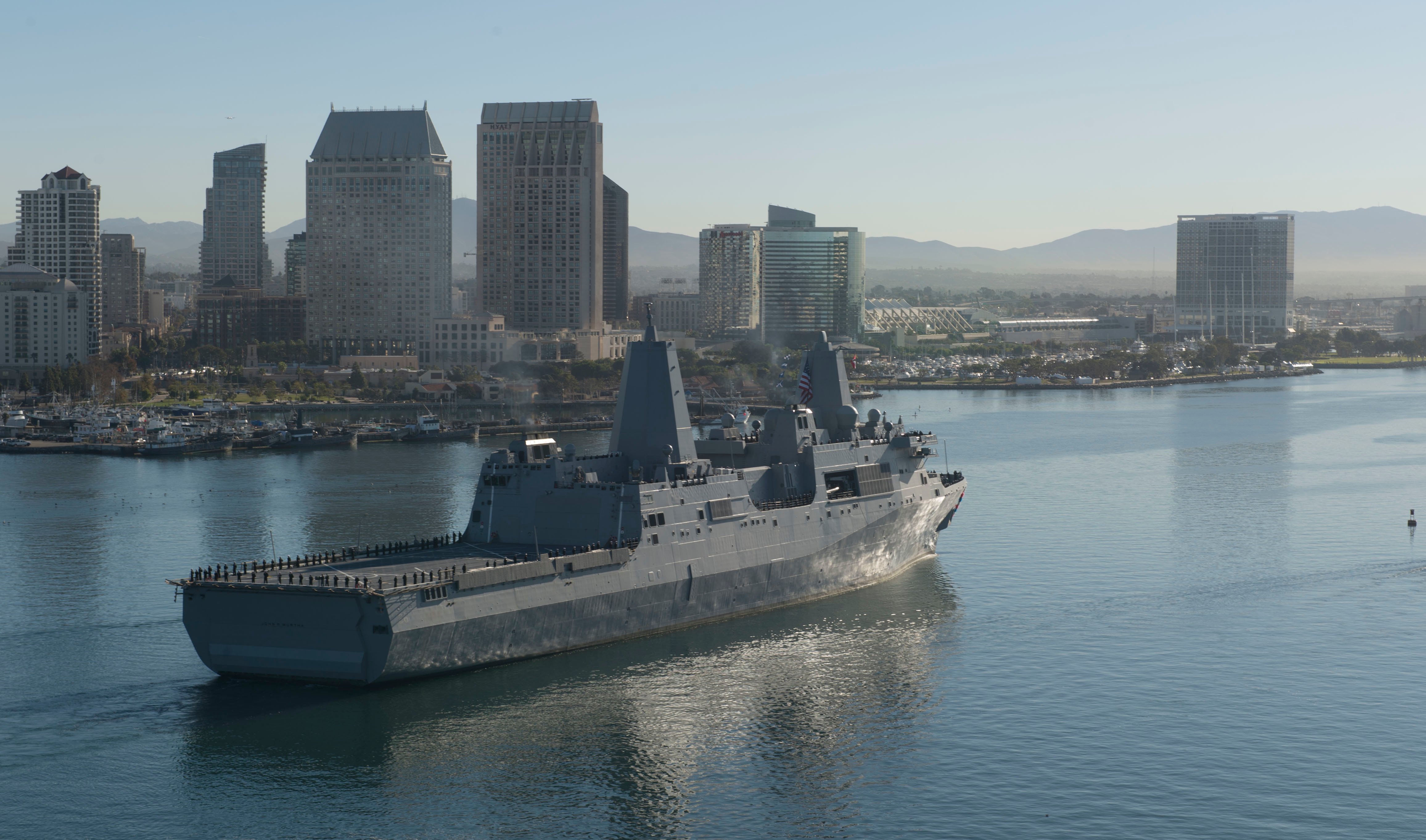
Amphibious transport dock USS John P. Murtha (LPD-26) is ready to turn its attention to crew training and fleet operations, having completed its final post-delivery test last week.
Murtha commissioned into the Navy in October 2016 and has spent the last nine months working through post-delivery test and trials with the Navy’s Board of Inspection and Survey (INSURV). The amphib returned to its homeport at Naval Base San Diego on July 21 following the final post-delivery test event, Final Contract Trials.
“USS John P. Murtha and her crew have proven with every test that she is capable and ready for deployment,” Capt. Brian Metcalf, LPD-17 class program manager at Program Executive Office for Ships, said in a Navy news release.
During the Final Contract Trials, INSURV spent five days evaluating Murtha’s in-port and at-sea performance. At-sea testing included full-power runs, steering checks, key combat and communications systems checks, self-defense detect-to-engage exercises, rapid ballast and de-ballast operations, and anchor handling demonstrations.
With post-delivery tests completed, Murtha can now focus on crew training and other activities leading up to an eventual first operational deployment.
Murtha is the 10th San Antonio-class amphib to join the fleet. These LPDs transport and deploy combat and support elements of Marine Expeditionary Units. San Antonio-class ships carry surface connects such as amphibious assault vehicles and landing craft, and vertical lift connectors such as the H-1 and CH-53E helicopters and MV-22 Osprey tiltrotor.
Two additional San Antonio-class ships, Portland (LPD-27) and Fort Lauderdale (LPD-28), are currently under construction at Ingalls Shipbuilding yard in Pascagoula, Miss. The Navy awarded Ingalls Shipbuilding a contract for long lead time material and advance procurement last month in support of LPD-29, meant to bridge planned LPD production with the follow-on LX(R) production, which has not yet been awarded to any shipyard.
Amphibious ships, such as the LPD and the next-generation LX(R), are playing an increasingly important role in meeting anticipated combatant commander demands for expeditionary forces around the globe. Marine Corps leadership now regularly says more than 50 amphibs will be needed, while the Navy plans to have 34 amphibs by 2022.
Huntington Ingalls Industries wants to keep its production line hot to support an efficient transition from LPD to LX(R) or to retain the ability to build both ship classes at the same time. What that transition will look like is still unclear – though the Navy stated last year in a revised Force Structure Assessment that it needs a 355-ship fleet, the details of building up to that sized fleet remain uncertain, pending a defense strategy review by Defense Secretary James Mattis, expected to be completed this summer.





